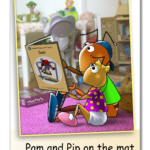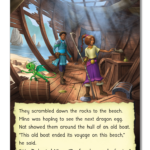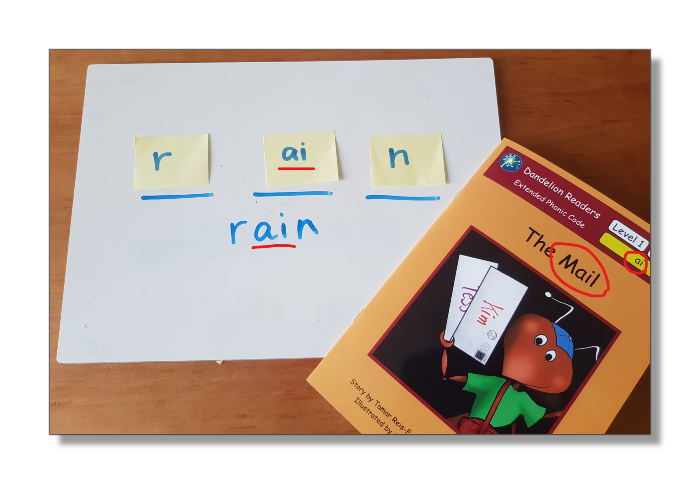
I’m a reading girl, but let’s talk math. If you were teaching long division to your students, what does that practice look like? Are you giving children 2 division, 4 multiplication, 18 addition, and 2 simplifying fraction problems (even though they’ve never seen them) for a challenge? Of course you aren’t! In math, ample amounts of practice in taught skills is recognized as essential. Somehow, over the decades, the same has not been true about reading. Instead of teaching a phonics skill and then giving children sufficient time to practice that skill, we often teach a phonics skill and then use a leveled text that has few, if any, words that target the learned skill. It’s time to change that narrative. So today I’m talking about when you should use decodable texts to practice skills and discussing when we can use other kinds of texts.
Children need practice with decodable text
Decodable texts are essential for children who are learning to read. I don’t expect children to independently read a leveled text in kindergarten or first grade. Additionally, I do not end a phonics lesson in any grade with a leveled reader. For our children who are learning to read, we must give them practice in decodable readers to give them the exposure they need to orthographically map words successfully. Because decodables are controlled for specific phonics skills, we can be confident they are seeing words that actually align to our instruction.
 Not solely for intervention or one to one
Not solely for intervention or one to one
Decodable texts are not just for intervention students or one-on-one tutoring. Decodables are great first practice for all children. Furthermore, decodables should not be something children read once before moving on. ALL children learning phonics can benefit from repeated practice in a decodable text. Let’s go back to our math example—do you have students practice long division once and then move on to the next skill? Just like in math, it is the repeated practice that will lead to automaticity and fluency. For many of our children, it takes between one and five exposures of a word before that word is orthographically mapped (*Kilpatrick, 2016). But for struggling readers it can take dozens, if not hundreds, of repetitions.
Not bound by age but skill
So where is the place for those other kinds of texts? Picture books and chapter books will always be great as a read-aloud, no matter the age. In the primary grades, those books are useful to read to children as a way to build comprehension. Additionally, once students can decode most single-syllable words, independent reading with picture books or chapter books becomes more achievable. We must never forget that when learning a new skill, decodable readers are once again essential. Decodable readers are not bound by age, but instead by the skills children need to practice.
So when you are teaching, remember this: it is only through repeated practice and exposure that our children can become automatic readers. Decodable texts are the tool we use to get there.
***
This is a guest blog by Savannah Campbell, who is a K-5 reading specialist. She has taught her entire career at the school she went to as a child. She holds two master’s degrees in education from the College of William and Mary. Savannah is both Orton-Gillingham and LETRS trained. Her greatest hope in life is to allow all children to live the life they want by helping them to become literate individuals.
*Reference: Kilpatrick, David A. Equipped for Reading Success: A Comprehensive, Step-by-Step Program for Developing Phoneme Awareness and Fluent Word Recognition. 2016.


